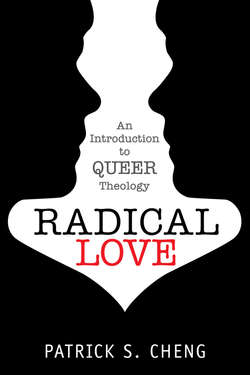Читать книгу Radical Love - Patrick S. Cheng - Страница 14
На сайте Литреса книга снята с продажи.
“Queer” as Erasing Boundaries
ОглавлениеA third meaning of “queer” is grounded in the academic discipline known as queer theory, which arose in the early 1990s and is indebted to the work of the late French philosopher Michel Foucault. Put simply, queer theory views sexuality as something that is “continually undergoing negotiation and dissemination, rather than as a mere natural (let alone medical) fact.”10 In other words, queer theory challenges and disrupts the traditional notions that sexuality and gender identity are simply questions of scientific fact or that such concepts can be reduced to fixed binary categories such as “homosexual” vs. “heterosexual” or “female” vs. “male.” As such, this third definition of “queer” refers to the erasing or deconstructing of boundaries with respect to these categories of sexuality and gender.
In other words, queer theory argues that the significance of traditional categories of sexuality and gender identity are actually social constructions. For example, Foucault demonstrated how the term “homosexual” was only invented in the late nineteenth century in Germany. This is not to say that there weren’t people engaging in same-sex acts prior to that time. In fact, there certainly have been people engaged in same-sex acts throughout history and across cultures. What Foucault was saying, however, was that this was the first time that a person’s identity was defined or categorized in terms of the gender of her or his preferred sexual partner(s). Thus, sexuality became an issue of being—that is, who one was—as opposed to what one was doing.
Although in some ways it may be helpful for a minority group (such as “homosexuals”) to identify itself in essentialist terms for purposes of achieving greater political or legal power, ultimately such classifications are problematic because, as Foucault pointed out, such classifications are actually a means by which society circumscribes and exercises power and control over the classified group.
For example, we could imagine a world that limits marriage to people who only have a hat size less than 7½ or only people who prefer Pepsi over Coke. In such a world, such classifications—that is, one’s hat size or preferred brand of soda—would have significant consequences for its inhabitants. However, these classifications are no less “natural” than classifying people on the basis of the gender of their preferred sex partners. For example, for much of history, people were classified in terms of whether they were the penetrators (tops) or the penetrated (bottoms) in sexual acts, and not by the gender of their preferred sex partners.”11
As such, categories of sexuality are ultimately social constructions. Furthermore, the fact that sexualities are traditionally reduced to the binaries of “homosexuality” vs. “heterosexuality” ignores the more complicated notion that sexuality occurs across a spectrum. Indeed, the existence of bisexual people is a challenge for straight people as well as lesbians and gay men because it threatens the neat categories of “homosexuality” vs. “heterosexuality.”
The same analysis applies to gender identity. The existence of transgender and intersex people challenges the traditional binary categorization of gender and sex as “female” vs. “male.” This is precisely why cross-dressing can be troubling for many people; it threatens our society’s neat, socially constructed notions of gender expression and sex. As Judith Butler has argued, gender is a performative act as opposed to a matter of essentialism or nature. That is, gendered notions of “femaleness” and “maleness” are culturally constructed and are not necessarily related to one’s biological sex. Thus, whenever a person refuses to engage in the “correct” gender expression that is expected of her or his biological sex (such as in the case of cross-dressing), this threatens the social order and, as such, reveals the socially constructed nature of gender identity.”12
Gerard Loughlin, an openly gay theologian at the University of Durham, has described “queer” as that which “seeks to outwit identity.” In other words, “queer” destabilizes that which is perceived as “normal” identity—for example, the binary choice between “heterosexuality” and “homosexuality”—by erasing the boundaries between such polarities and thus symbolizing a “difference, a divergence.” For Loughlin, queer theory is a means by which “heteropatriarchal Christianity” can be destabilized and deconstructed.13
Thus, the third meaning of “queer” is the erasing or deconstructing of boundaries, particularly with respect to the essentialist or fixed binary categories of sexuality and gender. As we have seen, this meaning of “queer” is grounded in the academic fields of queer studies and queer theory, which in turn is based upon the work of academics such as Michel Foucault, Judith Butler, and Eve Kosofsky Sedgwick.
